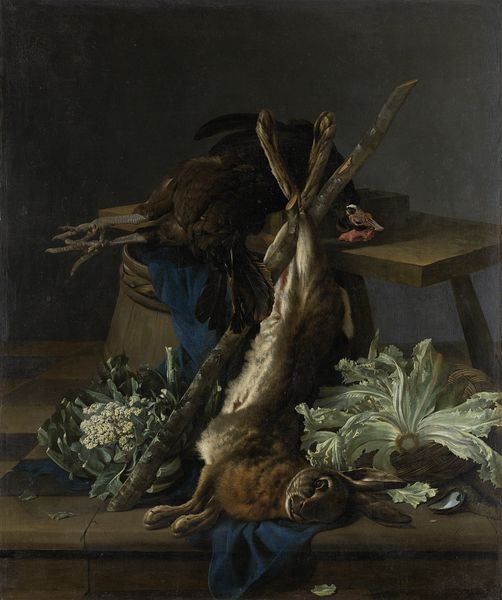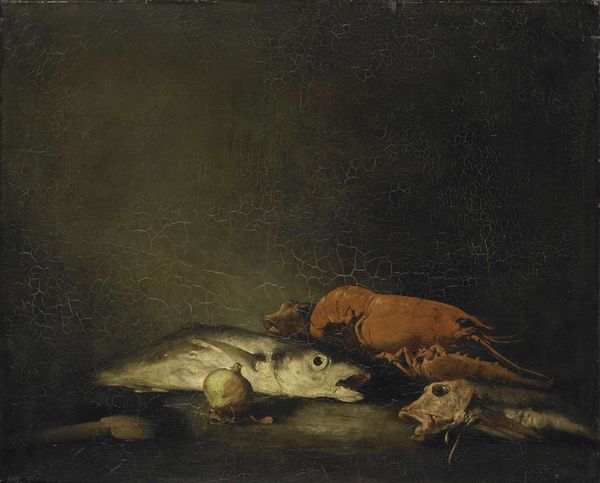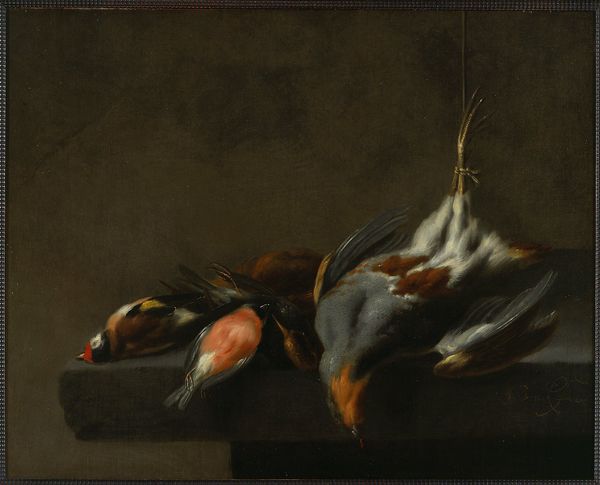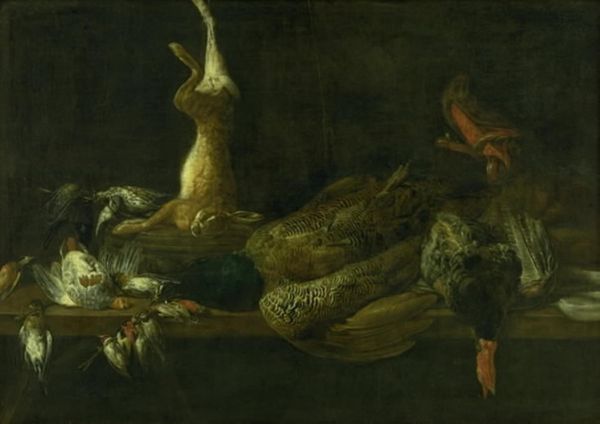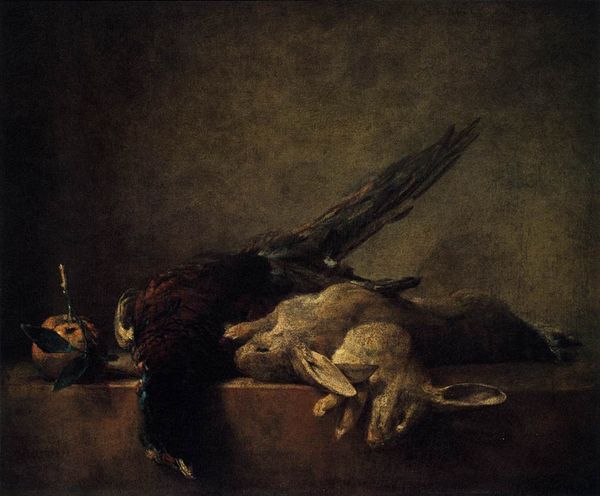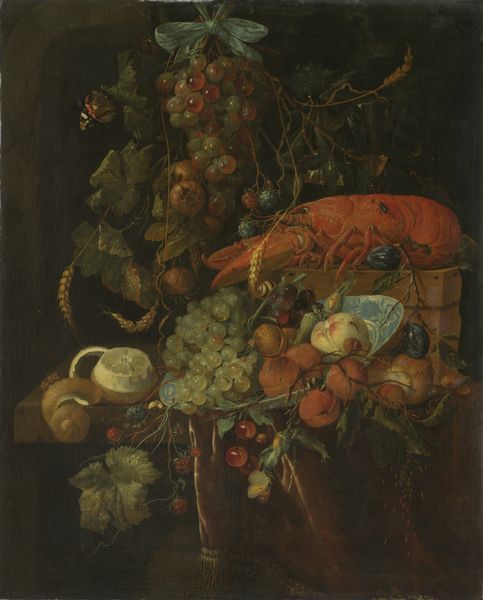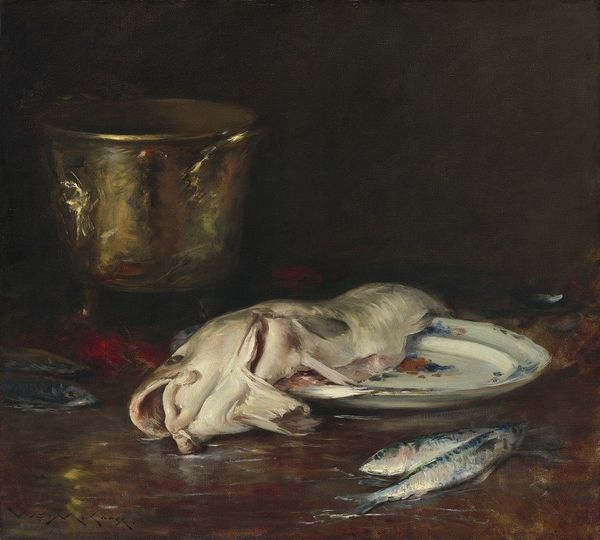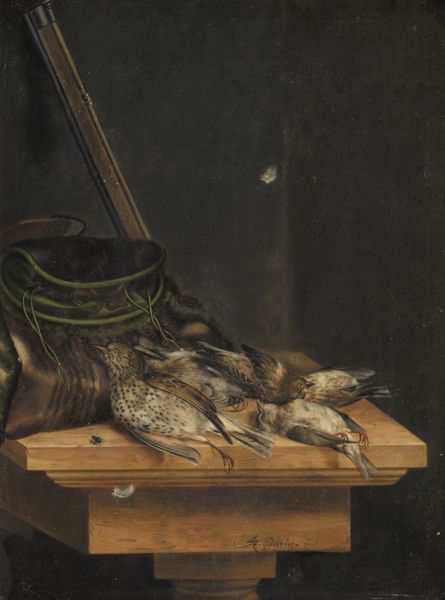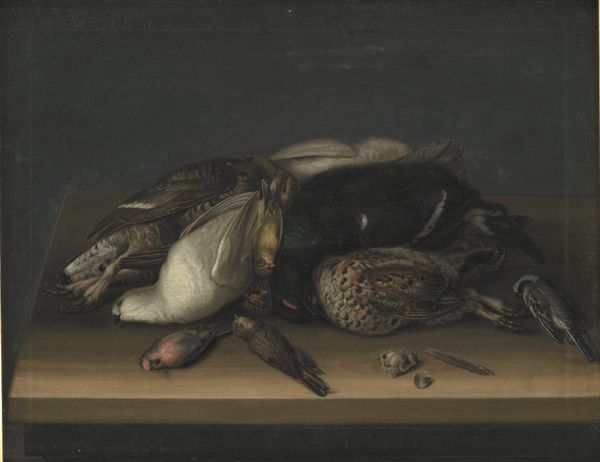
oil-paint
#
16_19th-century
#
oil-paint
#
oil painting
#
genre-painting
#
realism
Dimensions: height 35 cm, width 27 cm, depth 8 cm
Copyright: Rijks Museum: Open Domain
Curator: "Still life with Wood Pigeon and Powder Horn" painted in 1874. It’s an oil-on-canvas piece by Guillaume Anne van der Brugghen. Editor: My first impression is a subdued kind of darkness – death, really. The browns and grays are so muted, it feels somber. Curator: Right, the palette does set a mood. Consider the materials and how they were handled. Oil paint allowed for a certain level of realism— the feathers, the textures of the wood grain and fabric… They reflect 19th-century interests in capturing details of the material world and also consider, perhaps, the role of hunting in Dutch society. Editor: I find that context key, given the rising anxieties of rapid industrialization. These still lifes— these trophies— can be seen as reflections of a dominant masculine identity tied to land ownership and a disappearing agrarian way of life. Hunting becomes less about necessity and more about…conspicuous consumption? Curator: Consumption absolutely plays a role here. Dutch still lifes often spoke to wealth and leisure through carefully chosen objects and costly materials. The pigment itself could be seen as an economic signifier, and the artist is quite skilled at creating a rich composition that would find appeal in the high art market. Editor: Looking closely, I notice that even within the realistic style, there is a tension, maybe a commentary. That beautiful cord, the tassels… These feel oddly decorative amidst the blunt reality of death. This contrast could critique the romanticization of rural life and expose an undercurrent of violence inherent in that pursuit. It can highlight social class that consumed but remained far removed from this violence and even more removed from the lives affected by their consumption. Curator: Perhaps, or we can also consider how Van der Brugghen uses shadow and light to guide the viewer’s eye across the piece. There's real craftsmanship involved in evoking the softness of feathers, and I suspect it shows not only an adherence to craft, but that the choice of object itself allows the artist to present this skillset to potential customers of art. Editor: Agreed, the technical skill is undeniable. But, the overall narrative it feeds into—the romanticizing violence under a banner of masculine privilege— should not be ignored, in my view. Curator: Well, analyzing its materials and the social contexts can make even an image with seemingly straightforward realism so fascinating, don’t you agree? Editor: Definitely. It shows how closely intertwined aesthetics, labor, and socio-political contexts truly are.
Comments
No comments
Be the first to comment and join the conversation on the ultimate creative platform.

